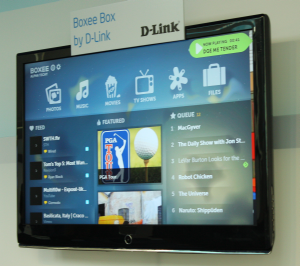I'm still here at the Intel Developer Forum (IDF) 2010, and just had the chance to try out something cool. The Intel Atom processors are lightweight x86 processors for use in a whole range of small devices. And being x86-based, they can run modern desktop operating sytesms.
At the beginning of 2010, Intel released the n450 version of the Atom. And to help engineers and hobbyists get started, they've created a "development board" which is a small circuit board containing an Atom processor, 1G of SO-DIMM memory, and several ports including USB 2.0 ports, a video port, and two ethernet ports. Optionally, you can get the board inside a handy, durable plastic case.
What's the point of this? To experiment building your own Atom-based devices. Here at IDF, they had a hands-on lab where you get to play with it. When I think back to my college days in the late 1980s, I was originally going into computer hardware engineering, not programming. And we were working with all sorts of devices and chips and circuit boards. But to build our own computer-powered devices required huge amounts of work that probably included burning yourself with a soldering iron. Getting software onto the device was practically an afterthought (assuming you had any hair left on your head after building your device).
But now the line has blurred between hardware and software engineer. Much of the computer itself is already built for you and lives inside the Atom chip itself. So here in one of the sessions, they had these development boards laid out for us, and we were presented with a challenge: Install an operating system on it. These boards had a keyboard and monitor plugged into the aforementioned ports, and had a small hard drive also plugged into them. We had a choice of several operating systems, including Google Android, Ubuntu, and MeeGo. And the way you install the operating system is start with a laptop computer to download the binary image, copy the image to a USB drive, plug the USB drive into the development board's USB port, and turn the thing on. Now if you've installed an OS on a regular computer, the next steps will sound very familiar. Boot the development board to the BIOS, select the bootup device (in this case the USB drive), and run the installer that's on the USB drive.
I chose the Google Android operating system. I downloaded the files, copied them to the USB drive, plugged it into the board, booted the board, and away it went. It booted off the USB drive and ran the Android installer. The installer did its thing, installing Android onto the hard drive. When that was done, I rebooted the device, and it started up. In other words, it really no different from installing a new operating systsem on any other computer. But in this case the "computer" is this tiny little board that can be used as the basis for some really cool products that we've been seeing here, including netbooks, smart TVs, or even high-tech motorcycles.
Now in the case of, say, a smart motorcyle, you would also have to include data acquisition hardware that would monitor the parts of the motorcyle. So you're not totally off the hook for building hardware.
But if you were to build, say, a smart TV, you'll need to also develop (or acquire) some software for displaying TV shows. But wait! Windows already has that built in with its media center. So you could have one of these Atom boards running Windows, and attach the board to a huge monitor (which is really what today's TVs are) and plug anything else into the USB ports, such as a keyboard or some other kind of controller. Here at IDF they have several such smart TVs on display. Of course, these aren't just hacked together with a development board and a monitor. Instead, in many cases, it's just a little box with an Atom processor in it and the necessary software, and you plug it into your own TV (and your own stereo system, and your own network). BUT -- the basic architecture is much like what I just described. (And many of these TVs have their own software, instead of the basic Windows Media Center.)
In the past it would have been overkill to embed a full x86-based processor inside, say, a TV, along with a hard drive and full operating system. ("Oops, Windows crashed; time to reboot the refrigerator.") But now that we have inexpensive hardware like hard drives and Atom processors, and powerful operating systems, why the heck not? Add to that modern lightweight operating systems like MeeGo and you're really onto something.
There are some seriously cool things here, and Smart TVs are among them. And I imagine it won't be long before you own at least something that has an Intel processor (and fulll operating system!) inside it. Maybe a smart TV, maybe a netbook, or even a high-tech motorcycle.
Want to get your hands on one of these development boards? They're $149 without the case. (They'll announce the pricing on cases later, but they Intel guy said he thought they'd only be around $10 or so.) You can find them at http://edc.intel.com/go/devboard-1-n450 .
